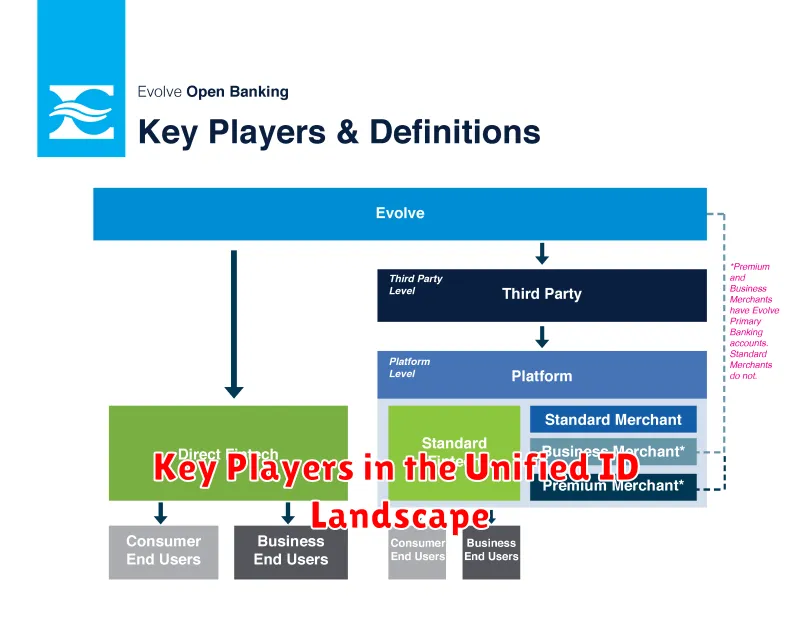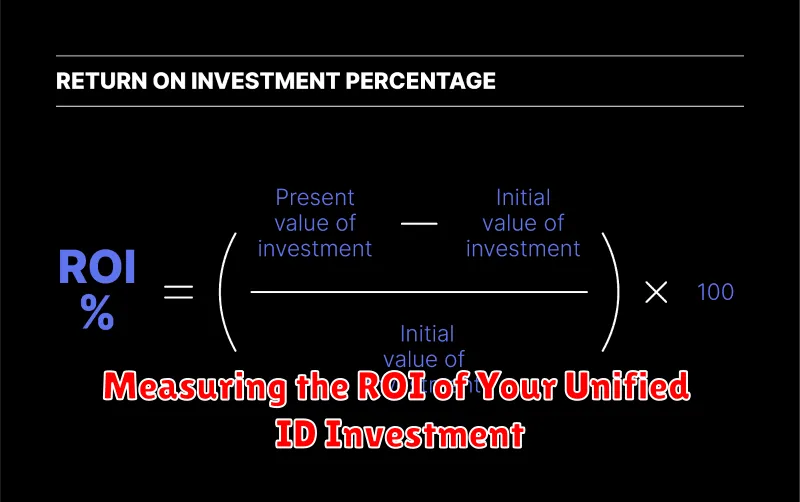In today’s increasingly fragmented digital landscape, marketers face the persistent challenge of accurately identifying and engaging with their target audiences. The proliferation of devices, platforms, and channels has created data silos, making it difficult to gain a holistic view of individual customers. This challenge necessitates a deeper understanding of Unified ID solutions and the critical role of Identity Resolution in achieving effective and personalized marketing campaigns. This guide is designed to demystify Unified ID and Identity Resolution, providing marketers with the knowledge necessary to navigate this complex landscape and unlock the full potential of their customer data.
This article provides a comprehensive overview of Unified IDs and Identity Resolution, explaining how these technologies work and the benefits they offer for modern marketing strategies. We will explore the core concepts, discuss various approaches to identity resolution, and examine the crucial role of data privacy and compliance. Whether you’re a seasoned marketing executive or just beginning to explore the possibilities of data-driven marketing, this guide will provide you with the insights and understanding you need to leverage Unified ID solutions and optimize your customer engagement efforts on a global scale. You’ll learn how to connect disparate data points, create a single customer view, and deliver more relevant and impactful experiences.
What is Unified ID and Why Does it Matter?
In the contemporary digital marketing ecosystem, the Unified ID emerges as a pivotal solution for addressing identity fragmentation. Simply put, a Unified ID is a persistent, anonymized identifier that represents a single user across various platforms and devices. It aggregates disparate data points into a single, coherent profile.
Why does it matter? The proliferation of channels and devices has made it increasingly difficult to accurately identify and understand customers. This fragmentation leads to inefficiencies in advertising spend, irrelevant customer experiences, and inaccurate analytics. Unified IDs enable marketers to overcome these challenges by:
- Creating a single view of the customer.
- Improving the accuracy of audience targeting.
- Enhancing personalization efforts.
- Optimizing marketing campaign performance.
By resolving identity, marketers can deliver more relevant messages, improve customer engagement, and ultimately drive better business outcomes. The absence of a Unified ID strategy hinders a marketer’s ability to effectively connect with their audience in a meaningful and measurable way.
The Core Concepts of Identity Resolution
Identity resolution is the process of linking fragmented data points about an individual to create a single, unified profile. This profile represents a holistic view of the customer across various touchpoints and platforms. Understanding the core concepts is crucial for leveraging its power effectively.
Here are some key concepts:
- Deterministic Matching: Relies on directly matching personally identifiable information (PII) such as email addresses or phone numbers. It offers high accuracy but limited reach.
- Probabilistic Matching: Uses algorithms to predict the likelihood of two records belonging to the same individual based on shared attributes. This expands reach but introduces a degree of uncertainty.
- Graph Databases: These databases are optimized to efficiently store and query relationships between data points, making them ideal for identity resolution.
- Persistent Identifiers: Stable and unique identifiers, such as hashed email addresses or device IDs, are essential for linking data over time.
The goal of identity resolution is to achieve a high level of accuracy and coverage, creating comprehensive customer profiles that can be used for improved marketing and personalization efforts.
How Unified IDs Work: A Technical Overview
At its core, a Unified ID system functions by creating a consistent identifier that links a user’s interactions across various platforms and devices. This process typically involves collecting disparate data points, such as email addresses, phone numbers, device IDs, and hashed advertising identifiers.
The key is deterministic matching and probabilistic matching. Deterministic matching relies on verified, directly matching data (e.g., the same email address used on two different websites). Probabilistic matching uses algorithms to infer identity based on patterns and similarities in data points.
Data is often passed through a data management platform (DMP) or a customer data platform (CDP) where the identity resolution process takes place. The resulting Unified ID allows marketers to recognize the same user across different touchpoints, enabling more accurate targeting and personalization. The following describes the step-by-step process:
- Data Collection: Gather various data points associated with a user.
- Matching Process: Employ deterministic and probabilistic matching methods.
- ID Creation: Generate a unique, persistent identifier (the Unified ID).
- Activation: Utilize the Unified ID for marketing activities.
The Benefits of Implementing a Unified ID Solution: Improved Targeting and Personalization
Implementing a Unified ID solution unlocks significant advantages in targeting and personalization. By creating a single, persistent view of each customer across various touchpoints, marketers gain a deeper understanding of individual preferences and behaviors.
This enhanced customer insight enables more precise targeting strategies, ensuring that marketing messages are delivered to the most receptive audience segments. Instead of relying on fragmented and often inaccurate data, Unified IDs allow for the creation of highly targeted campaigns based on a comprehensive customer profile.
Furthermore, a Unified ID solution facilitates superior personalization efforts. Brands can tailor website content, product recommendations, and email communications to individual customer needs, leading to increased engagement and conversion rates. The ability to personalize interactions across all channels fosters stronger customer relationships and drives brand loyalty.
Here’s a brief look at potential improvements:
- Increased Conversion Rates: More relevant offers lead to higher purchase rates.
- Improved Customer Lifetime Value: Personalized experiences foster loyalty.
- Reduced Marketing Waste: Targeting efficiency minimizes wasted ad spend.
Key Players in the Unified ID Landscape

The Unified ID landscape comprises diverse entities contributing to its development and implementation. These key players generally fall into several categories.
- Data Providers: These entities aggregate and supply data used for identity resolution. They often possess extensive databases of consumer information.
- Technology Vendors: These companies offer identity resolution platforms and solutions, enabling marketers to create unified customer profiles.
- Publishers and Media Companies: These organizations are often early adopters of Unified IDs to improve ad targeting and measurement on their platforms.
- Industry Consortia: These groups promote collaboration and standardization within the identity resolution space, fostering interoperability.
Specific examples of prominent players include companies specializing in customer data platforms (CDPs), marketing automation platforms, and those offering dedicated identity resolution services. The ecosystem is constantly evolving, with new players emerging and existing companies expanding their capabilities.
Challenges and Considerations When Adopting Unified IDs
Adopting Unified IDs presents several challenges that marketers must carefully consider. Data integration complexity is a primary concern, as merging data from various sources requires robust infrastructure and expertise.
Implementation costs can be significant, encompassing technology investments, personnel training, and ongoing maintenance. It’s crucial to assess the potential return on investment (ROI) against these expenses.
Furthermore, identity resolution accuracy is paramount. Inaccurate matching can lead to flawed targeting and wasted advertising spend. Regular audits and quality control measures are essential.
Maintaining data privacy and complying with regulations like GDPR and CCPA is non-negotiable. Implement robust consent management mechanisms and ensure data security throughout the process.
Finally, vendor lock-in is a potential risk. Evaluate the long-term viability and interoperability of your chosen Unified ID solution to avoid being tied to a single provider.
Unified ID and Privacy Regulations: Staying Compliant
Navigating the world of Unified IDs requires a strong understanding of privacy regulations. Implementing a Unified ID solution necessitates careful consideration of global laws like GDPR (General Data Protection Regulation), CCPA (California Consumer Privacy Act), and other regional and national directives focused on data protection and consumer rights.
Ensuring compliance involves several key steps:
- Data Minimization: Collect only the data necessary for legitimate purposes.
- Transparency: Clearly inform users about data collection and usage practices.
- Consent Management: Obtain explicit consent for data processing where required.
- Data Security: Implement robust security measures to protect user data from unauthorized access or breaches.
- Right to Access and Deletion: Provide users with the ability to access, correct, and delete their data.
Regularly review and update your privacy policies to reflect changes in regulations and ensure ongoing compliance. Consulting with legal counsel specializing in data privacy is highly recommended.
Future Trends in Identity Resolution
The field of identity resolution is rapidly evolving, driven by technological advancements and shifting consumer expectations. Looking ahead, several key trends are poised to reshape how marketers approach identity.
Increased focus on privacy-enhancing technologies (PETs): As privacy regulations become more stringent, techniques like differential privacy and homomorphic encryption will gain prominence, enabling identity resolution while minimizing data exposure.
Advancements in AI and Machine Learning: Expect more sophisticated AI-powered identity resolution solutions that can handle complex data relationships and predict identity with greater accuracy.
Expansion of identity resolution to emerging channels: Identity resolution will extend beyond traditional web and mobile environments to encompass new touchpoints like connected TVs, the metaverse, and the Internet of Things (IoT).
Decentralized Identity Solutions: Blockchain-based and self-sovereign identity models may emerge, empowering individuals with greater control over their data and how it’s used for identity resolution.
Implementing a Unified ID Strategy: A Step-by-Step Guide
Implementing a Unified ID strategy requires careful planning and execution. Here’s a step-by-step guide to help you navigate the process:
1. Define Your Goals and Objectives
Clearly articulate what you aim to achieve with unified IDs. Are you looking to improve targeting, enhance personalization, or gain a more holistic view of your customers?
2. Assess Your Existing Data Infrastructure
Evaluate your current data sources, systems, and processes. Identify any data silos or inconsistencies that need to be addressed.
3. Choose a Unified ID Solution
Research and select a Unified ID solution that aligns with your business needs and technical capabilities. Consider factors such as scalability, security, and integration capabilities.
4. Implement and Test
Deploy the chosen solution and conduct thorough testing to ensure data accuracy and system stability. Monitor performance and make adjustments as needed.
5. Integrate with Your Marketing Ecosystem
Connect your Unified ID solution with your existing marketing platforms, such as your CRM, DMP, and ad servers. This will enable you to leverage unified IDs across your marketing activities.
Measuring the ROI of Your Unified ID Investment

Quantifying the return on investment (ROI) of a Unified ID strategy is crucial for justifying its implementation and optimizing its performance. This involves tracking key performance indicators (KPIs) and attributing improvements directly to the enhanced identity resolution capabilities.
Key Metrics to Track
- Improved Ad Targeting: Measure click-through rates (CTR) and conversion rates for campaigns leveraging Unified IDs compared to previous methods.
- Enhanced Personalization: Analyze customer engagement metrics, such as time on site, pages per visit, and purchase frequency, for users identified through Unified IDs.
- Reduced Ad Waste: Track the decrease in wasted ad spend due to more accurate targeting and suppression of duplicate audiences.
- Increased Customer Lifetime Value (CLTV): Monitor the long-term impact of improved customer experiences and personalized interactions on CLTV.
- Operational Efficiency: Assess the reduction in data management costs and the streamlining of marketing workflows resulting from a centralized identity resolution system.
Attribution Modeling
Employ attribution modeling techniques to accurately attribute revenue and conversions to the Unified ID implementation. This may involve using multi-touch attribution models or incrementality testing to isolate the impact of Unified IDs from other marketing initiatives.

